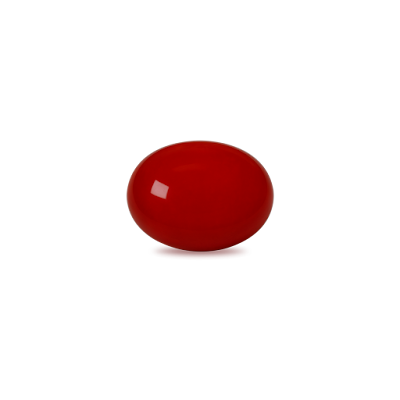In the realm of precious gemstones, Japanese Red Coral stands out as a symbol of elegance, cultural heritage, and mystique. Known locally as Sango and scientifically as Corallium japonicum, this deep-sea treasure has captivated collectors, healers, and jewelry enthusiasts for centuries. With its rich crimson hues and organic origins, Japanese Red Coral is more than a decorative gem-it’s a bridge between nature, history, and spirituality. In this comprehensive guide, we’ll explore its origins, cultural symbolism, metaphysical properties, and how to ethically acquire and care for this marine marvel.
What is Japanese Red Coral?
Scientific Background
Japanese Red Coral is a species of precious coral found in the depths of the Pacific Ocean, particularly around the Ryukyu Islands, Okinawa, and the southern coasts of Japan. Unlike stony corals, which form reefs, Corallium japonicum grows in tree-like structures at depths of 100-1,500 feet. Its vibrant red-to-pink coloration comes from carotenoid pigments, while its durability (3.5 on the Mohs scale) makes it ideal for intricate carvings and jewelry.
Physical Characteristics
- Color Range: Ranges from pale pink (Boke) to deep oxblood (Moro).
- Texture: Smooth, matte finish with natural grooves.
- Structure: Composed of calcium carbonate and conchiolin, giving it a delicate yet polishable surface.
Historical Significance in Japan
Ancient Uses and Royal Connections: For over 2,000 years, Japanese Red Coral has been prized. During the Edo period (1603-1868), it adorned samurai swords, hairpins, and royal insignia. The gemstone symbolized power and protection, often gifted to nobility. Artifacts like the Sangui (coral beads) were buried with elites to ensure safe passage to the afterlife.
Cultural Symbolism: In Shinto and Buddhist traditions, red coral represents longevity and prosperity. It’s used in rituals to honor deities like Ebisu, the god of fishermen, and is believed to ward off misfortune. During festivals such as Hinamatsuri (Doll’s Festival), coral accents decorate displays to bless young girls with a harmonious future.
Cultural and Spiritual Meaning
Modern Symbolism: Today, Japanese Red Coral remains a token of good luck. Brides wear coral jewelry to ensure happy marriages, while businessmen carry coral charms for career success. Its association with the ocean ties it to themes of adaptability and resilience in Japanese culture.
Metaphysical Properties and Healing Benefits
Emotional and Physical Healing
Practitioners of crystal healing believe Japanese Red Coral:
- Stimulates Energy Flow: Aligns with the root chakra, grounding emotions.
- Promotes Vitality: Said to improve circulation and alleviate fatigue.
- Encourages Emotional Balance: Calms anxiety and fosters courage.
Spiritual Growth
In meditation, the gemstone is used to enhance intuition and connect with ancestral wisdom. Its oceanic origin links it to the subconscious, aiding in emotional release.
Identifying Authentic Japanese Red Coral
Visual Clues
- Color Consistency: Authentic coral has subtle gradients, not uniform dye.
- Natural Imperfections: Look for tiny pits, ridges, or “coral fingerprints.”
- Weight: Heavier than plastic imitations but lighter than glass.
Professional Verification
Seek certifications from gemological labs (e.g., GIA) or CITES permits to confirm ethical sourcing.
Caring for Your Coral Gemstone
- Cleaning: Wipe with a soft, damp cloth; avoid chemicals or ultrasonic cleaners.
- Storage: Keep separate from harder gems to prevent scratches.
- Recharging: Place in moonlight to maintain its energetic vibrancy.
The Market for Japanese Red Coral
1. Rarity and Value: Due to overharvesting and strict regulations, high-quality Moro coral can fetch 1,000-5,000 per carat. Antique pieces, especially Edo-era carvings, are highly sought at auctions.
2. Investment Potential: With sustainable harvesting practices now enforced, ethically sourced coral is becoming a rare investment asset.
Ethical Considerations and Sustainability
1. Environmental Impact: Coral ecosystems are fragile. Overharvesting threatens marine biodiversity. Japan now limits coral fishing to specific seasons and depths.
2. Regulations: Japanese Red Coral is listed under CITES Appendix III, requiring permits for export. Buyers should prioritize retailers supporting marine conservation initiatives.
Incorporating Japanese Red Coral into Jewelry
Design Ideas
- Traditional: Kanzashi (hair ornaments) with coral blossoms.
- Modern: Minimalist pendants or statement rings.
Styling Tips: Pair with gold settings for warmth or contrast with pearls for a classic look.
FAQs
Is Japanese Red Coral ethical to buy?
Yes, if sourced from licensed harvesters with CITES certification.
Can it fade over time?
Prolonged sunlight exposure may dull its color; store carefully.
How does it differ from Mediterranean coral?
Japanese coral has deeper red hues and denser structure.
Conclusion
Japanese Red Coral is a gemstone steeped in history, culture, and natural wonder. By understanding its origins and embracing ethical practices, we can preserve its legacy for future generations. Whether worn for beauty, healing, or heritage, this oceanic treasure continues to inspire awe across the globe.
Explore Responsibly: Always verify authenticity and support sustainable initiatives when adding Japanese Red Coral to your collection.














0 Comments